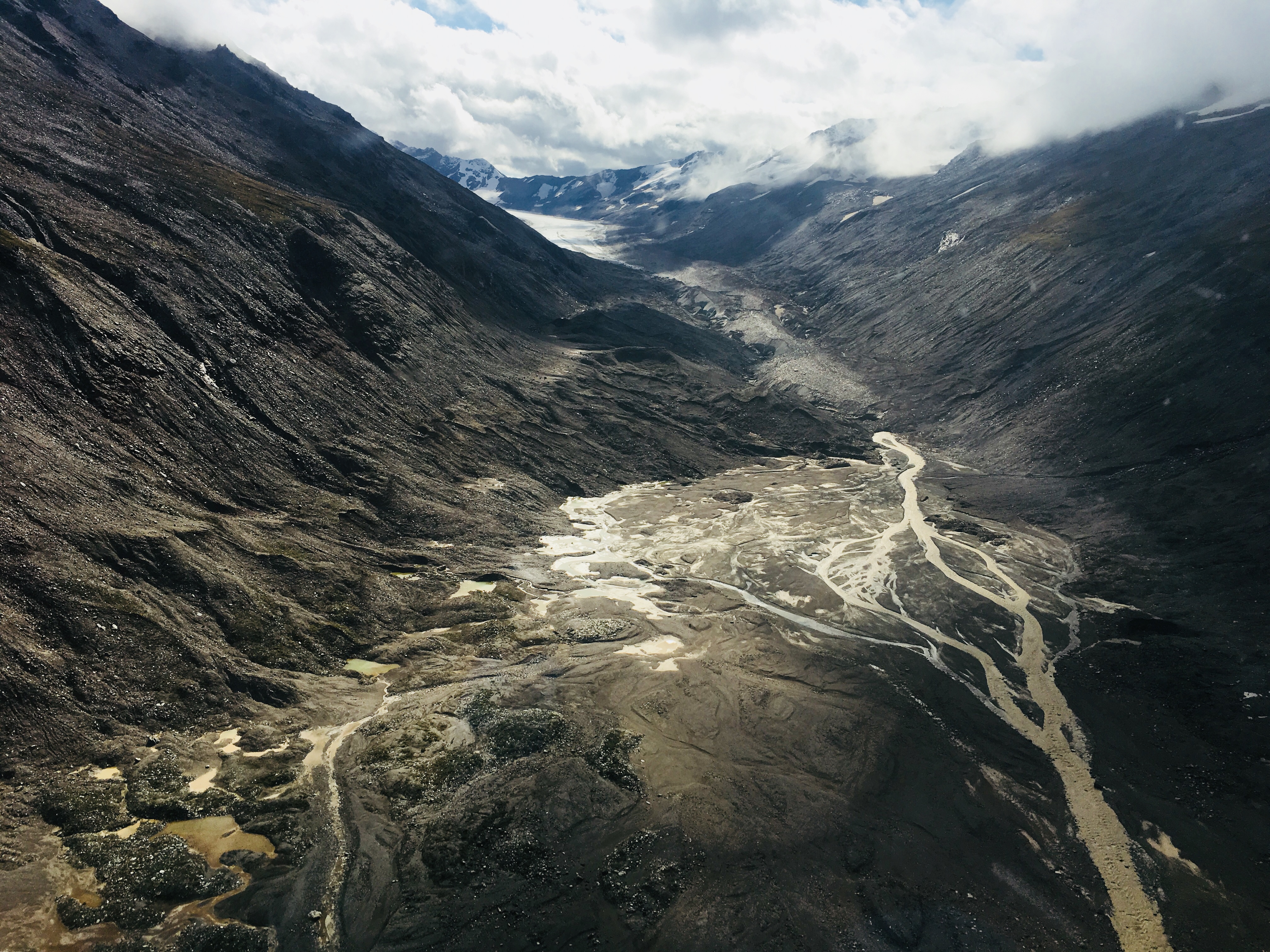A shrinking Alaska glacier is releasing old pesticides in its meltwater
Banned toxic chemicals, including pesticides such as DDT, are melting out of glaciers in Alaska and elsewhere in the Arctic as they retreat.

Decades ago, when DDT was considered a miracle weapon against insect pests, people doused crops, fields, buildings and neighborhoods with the chemical compound. Remnants of that and other now-banned pesticides streamed into the atmosphere, attached to airborne snow and ice particles and dropped down on high-latitude and high-altitude cold places, accumulating in the Arctic.
Now a rapidly melting glacier in eastern interior Alaska is releasing that stored DDT into its outflow stream, raising concerns about the long-term safety of salmon eaten by local people.
A newly published study documents the flow of DDT compounds and those of another pesticide, Hexachlorocyclohexane, or HCH, in the ice and the creek flowing out of Jarvis Glacier in the Alaska Range. Jarvis Glacier drains water into Alaska’s Tanana River and, ultimately, into the Yukon River watershed. Salmon from that river system are an important part of the regional diet and local Indigenous culture.
The presence of DDT and HCH within Jarvis Glacier and its outflow stream “reaffirms the ubiquitous transport and deposition” of organochlorine pollutants, or OCPs, in the high North, said the study, by scientists from the University of Maine — who have done a lot of research at the site — the University of Alaska Fairbanks and the U.S. Army Engineer Research and Development Center.
“It is likely that Jarvis Glacier is not an isolated case and that numerous glaciers in the Eastern Alaska Range also house legacy OCPs,” says the study, which is published in the journal Water.
Jarvis Glacier is small and getting smaller. Its terminus retreated about a mile between 1949 and 2015, and it has thinned rapidly in recent years.
It is still a beautiful setting, but the findings about the pesticides within it are disturbing, said Anna Liljedahl of UAF, a co-author of the study and a scientist who had spent years working at Jarvis Glacier.
“It’s so gorgeous,” Liljedahl said. “But underneath is nasty stuff that’s coming out of the glacier.”
So far, levels of DDT and HCH are too low to make drinking water or fish consumption unsafe. The concern is that the long-lived contaminants, which accumulate in the bodies of fish and animals, will become magnified over the long term as they work their way up the food chain.
In humans, DDT is linked to health problems and is considered a likely carcinogen, according to the Centers for Disease Control.
The Jarvis Glacier study is specific aimed at evaluating the habitat of salmon eaten by people of the region. But it is far from an only-in-Alaska problem, Kimberley Miner of the University of Maine, the study’s lead author.
“These pesticides have been found everywhere, from Svalbard to Switzerland, in glaciers all over the world,” Miner said.
Using measurements taken at Jarvis Glacier in 2016 and 2017, the team found three DDT compounds and, in lesser concentrations, two HCH compounds. In the ice, the concentrations were higher near the surface than they were deep below, and concentrations in the creek carrying the glacier’s meltwater were higher than those found in the ice. Concentrations in meltwater exceeded those found in the ice, and concentrations in the water were highest in June and July, a strong sign that melt is releasing the pollutants.
Exactly when the DDT and HCH was deposited into the glacier or what its sources are remains unknown. The study authors hypothesize that the DDT was transported there from Asia, where it has been used to combat malaria; some limited use of DDT for that purpose has been allowed even though almost all use is banned internationally. But HCH, contained in a pesticide with the brand name Lindane, is still used around the world, though it is no longer made in the United States; pinpointing its source appears to be nearly impossible.
Still, the authors are pretty sure how the pollutants got to Jarvis Glacier.
Miner explained the physics of long-range transport. The contaminants, as they stream up into the atmosphere, move around easily in warm temperatures but get “sluggish” as they are chilled, she said. In the atmosphere, they are swept up by particles and carried by snow and rain, sometimes for thousands of miles, until they are deposited in cold places — generally the tops of high mountains or the Arctic.
The accumulation of persistent organic pollutants, or POPs, has long been considered a serious problem in the Arctic. Discovery of the contaminants in the habitat and in the bodies of animals hunted by Indigenous peoples help inspire the creation of the eight-nation Arctic Council in 1996. The council’s early work on POPs contributed heavily to the 2001 Stockholm Convention that bans some POPs and is phasing out use of others.
There is evidence that the Stockholm Convention, added to earlier contaminant bans imposed by individual nations, produced positive results for the Arctic. Levels of DDT and some other dangerous chemicals declined in Arctic wildlife and fish, according to the Arctic Council’s Arctic Assessment and Monitoring Program.
But more modern contaminants, such as flame retardants, have emerged as new problems in the Arctic, the AMAP reports.
And the Arctic ice melt and permafrost thaw threatens to release loads of long-sequestered legacy contaminants, possibly undoing recent years’ progress, AMAP reported.
The findings at Jarvis Glacier, the study’s authors say, show how pollution in the faraway south affects the North, even if the effect is delayed.
“The Alaska Range is not isolated from the rest of the world,” Liljedahl said.
Yereth Rosen is a 2018 Alicia Patterson Foundation fellow.